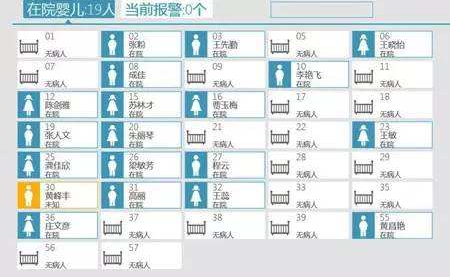This project is mainly to complete the research and implementation of the anti-theft system for newborn babies with anti-missing, anti-stolen and access control functions. The specific work includes the following parts:
Basic system functions:
Establish an active electronic tag (button battery powered);
A reader that implements identification and response to electronic tags;
Study the development of central processing hardware for PIC32 microcontrollers;
Establishing a detector at the relevant outlet;
Establish an abnormal situation handling mechanism, such as the baby mark is destroyed, the mark is not detected, the baby enters the illegal area, etc., and the system performs relevant processing on the corresponding situation;
extensions:
Realize the connection with the hospital network and link with the surrounding center of the hospital;
Electronic temperature sensing can be added to measure the body temperature of newborn babies to prevent babies from having a fever or low fever, and it is found that later results in poor results.

Radio Frequency Identification (RFID) technology is an application technology that has existed for decades. Its application in logistics and supply connection is just beginning, and its application in other fields is still in its early stage. RFID has the characteristics of non-visual recognition, long recognition distance, strong environmental adaptability, unique ID number, difficulty in forgery and cloning, data rewriting on site and large amount of data storage. In recent years, RFID technology has made great progress in many aspects. For example, the rotary packaging machine manufactured by Harbin Capital of Japan has made the annual packaging capacity of electronic tags reach 200 million pieces; RCG Hongba Digital Technology (Beijing) Co., Ltd. will Both RFID and biometrics are equally important; the National Engineering Research Center for Software Engineering has achieved initial success on public information platforms; Oracle's "information management based on RFID sensor technology"; Nokia's "Nokia's NFC verification solution".
Newborn babies are born every day in the hospital. Because newborn babies have similar appearance characteristics and no understanding and expression ability, if they are not effectively identified, they will cause problems such as baby babies and stolen babies, which will bring disaster to hospitals and infant families. as a result of. In order to effectively avoid this problem, we have designed a baby anti-theft system based on RFID technology, which can completely prevent the baby from being stolen in the hospital and effectively protect the safety of the baby. Radio Frequency IdenTIficaTIon (RFID) technology is a non-contact automatic identification technology that automatically identifies target objects by radio frequency signals. No need for a visible light source, it is penetrating, and data can be acquired without direct contact with the target.
The hospital is a public place with complex personnel and very large flows. In recent years, the incidents of newborn babies being lost and stolen in hospitals often occur. Traditional baby monitoring management is usually managed by manual care management using visual recognition text, barcodes, and cards. This management method is often easily caused by misidentification. The incident of being exchanged and stolen has brought huge losses and impacts to hospitals and their families.
This paper proposes a new RFID-based application design scheme for neonatal electronic anti-theft system. Because RFID has long-distance non-contact fast and accurate reading characteristics, it is very suitable for reading and monitoring neonatal characteristic information. The data processing is more reasonable and scientific, and the system runs reliably.
Nowadays, due to the lack of reliable baby identification products, the neonatal ward uses a piece of tape with the patient's bed number attached to the head and hands of the sick child. It is an important sign of the patient throughout the hospital stay. Because the tape needs to be refilled after bathing and scalp infusion. In addition, the newborn's skin is delicate, if the patient stays for a long time, the skin will be red and swollen and other skin allergies, often causing dissatisfaction of the patient's family, resulting in unnecessary medical disputes. In order to prevent skin allergies, it is necessary to change the place to re-stick every day. At the same time, the handwritten materials may be too illegible to recognize, sometimes the correct information cannot be obtained, and the repeated writing causes the work load to be aggravated. Based on the above reasons, we have made some attempts to introduce RFID (Radio Frequency ID) technology into hospital neonatal management by means of the widespread use of modern wireless network technology in hospitals. This paper proposes an RFID-based baby monitoring system application model. It describes the new application mode structure of RFID through the process of RFID data collection, transmission, processing, storage and management. It aims to give some examples of RFID enterprise application model. The program of reference.
Media Player,Streamer Rgb Lamp Earphones,Portable Media Player,Stainless Steel Pu Sheath Earphones
Guangzhou Lufeng Electronic Technology Co. , Ltd. , https://www.lufengelectronics.com
![<?echo $_SERVER['SERVER_NAME'];?>](/template/twentyseventeen/skin/images/header.jpg)